What is the oldest star in the Universe?
And why do some of them appear to be right here in our own galaxy, which formed much later?
Image credit: DSS, of SMSS J031300.36–670839.3, candidate for “oldest star.”
“Let others praise ancient times; I am glad I was born in these.” –Ovid
Looking up at the stars in our night sky, it’s pretty clear that they aren’t all the same.
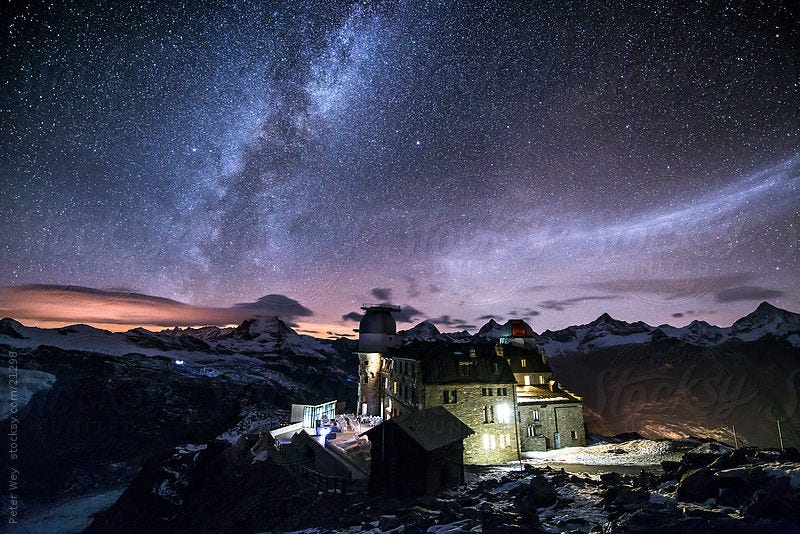
Some of them shine incredibly brightly, while others are so mind-bogglingly faint you can only see them out of the corner of your eye; they’ll disappear if you look directly at them. Some of them are blue in color, while others shine white, yellow, orange or even red. And some of them seem to twinkle and vary like mad, while others are virtually steady, unchanging sources of light.
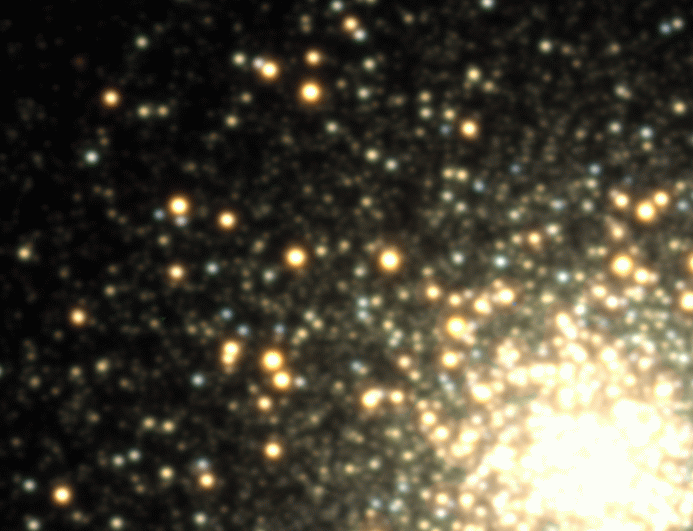
As it turns out, our visual cues don’t always provide us with accurate insight into these objects at all! The stars that twinkle most wildly — like Sirius, for example — tend to do so because of atmospheric effects, and tend to be exaggerated when a star either appears low on the horizon (and hence, its light has more atmosphere to pass through) or is in the way of a particularly turbulent patch of sky. It has nothing to do with the inherent properties of the star!
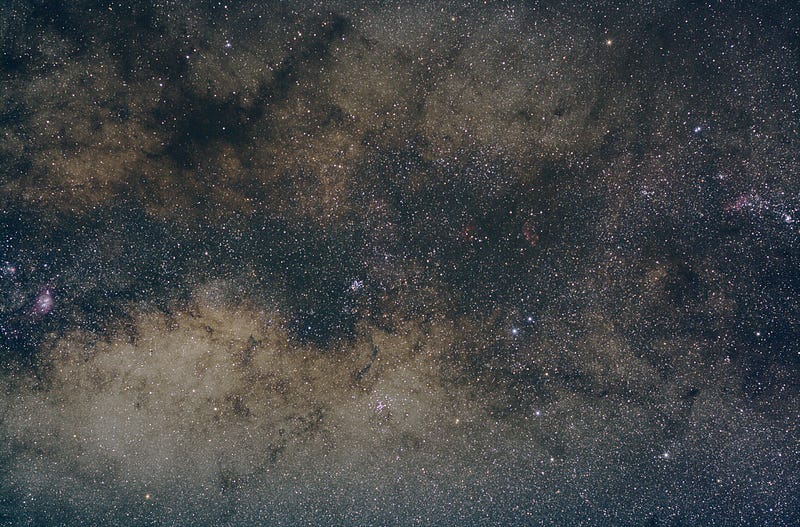
Similarly, there are stars that are intrinsically brighter or fainter than others. But the stars we see in the night sky are just as likely to be intrinsically brighter but quite distant as they are to be relatively modest, but simply close by. When we talk about the apparent brightness of a star, we have to use more than just that information alone if we want to know whether two stars in the sky are truly intrinsically different from one another.
But color is another story.
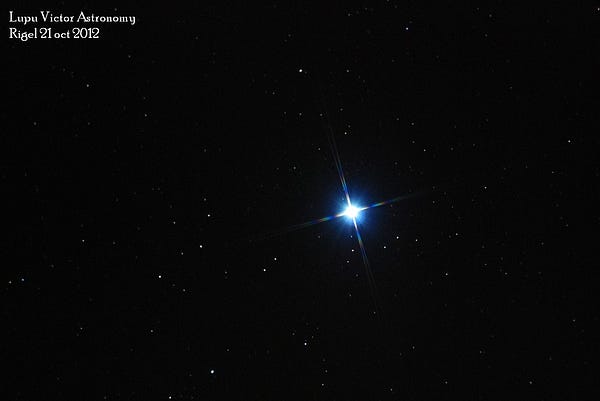
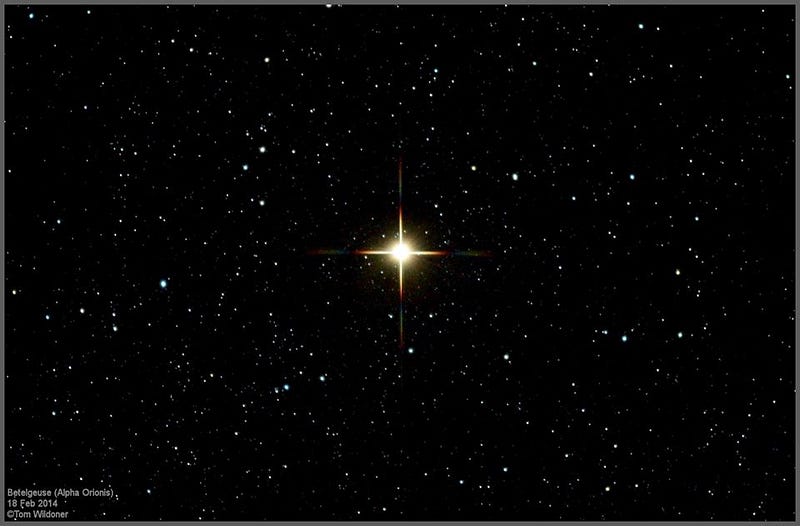
A blue star and a red star are always going to be significantly different from one another. A star, remember, is just normal matter — protons, neutrons and electrons — heated to incredible temperatures by the nuclear processes happening inside. When you see a red star like Betelgeuse (right), or a blue star like Rigel (left), the color difference you’re seeing is legitimately because there is a temperature difference between these two stars.
And it turns out that if you can use the properties of a star to learn not only what its apparent brightness is, but its intrinsic brightness, you’ll discover that there’s an important and universal relationship between a star’s color and its magnitude, or its intrinsic brightness.
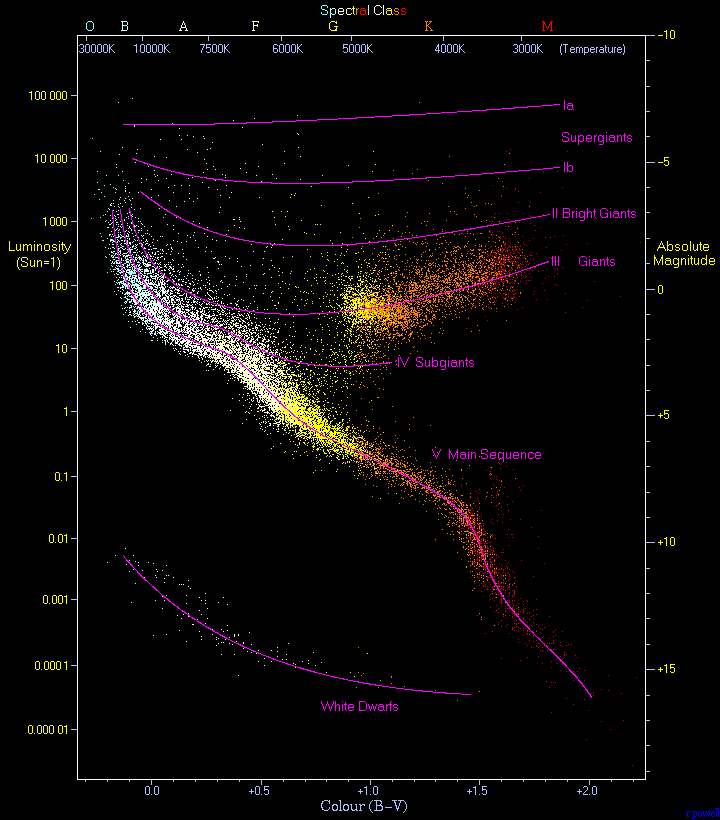
This relationship is known as the Hertzsprung-Russell diagram, and allows us to identify what stage of its life cycle a star is in. For a star like our Sun — and in this context, “like our Sun” means between about 40% and 400% of our Sun’s mass — it will start out as a Main Sequence star, remaining as one until it begins to run out of hydrogen to fuse in its core. It will then brighten, expand and cool slightly, becoming a more luminous subgiant star in the process. Eventually, it will start fusing helium in its core, becoming a true giant star, perhaps oscillating in color between red and yellow at various points. When it runs out of its core helium, the outer layers will be expelled, with the core contracting down to a hotter but significantly less luminous white dwarf.
The incredible thing is, when we look at a population of stars that all formed at the same time — because the brightest, bluest main sequence stars burn through their fuel the fastest — we can determine what the age of that population is simply by looking at where the main sequence “turns off,” or where we start to have subgiants.
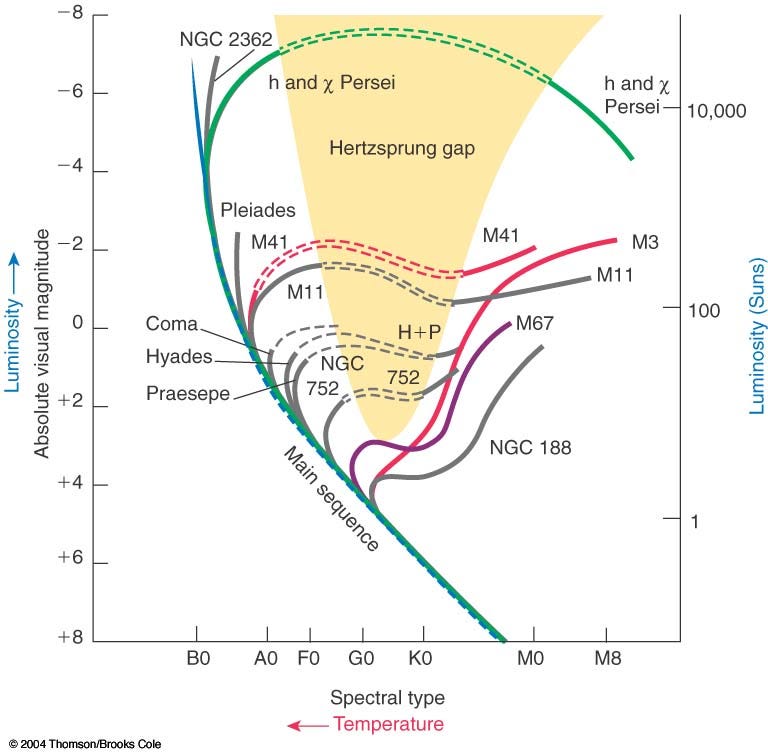
For an open star cluster, we can have ages ranging from just around 1,000,000 years all the way up to very old examples like NGC 188, which comes in around five billion years, or even older than our own Sun! But there are plenty of places we can look that have stars even older than that.
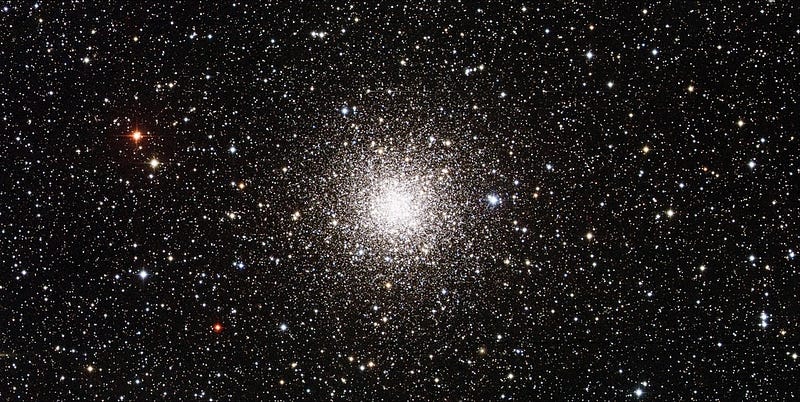
Globular star clusters are some of the most ancient objects in the entire Universe, like Messier 56, above. With ages often in excess of 12 billion years, and occasionally in excess of 13 billion, approaching the age of the Universe itself, these are truly relics from a different time.
This is excellent for trying to look back to (and understand) the earliest stages of the Universe, since an object that’s much older was formed much closer to the Big Bang, and hence, when the Universe was much more pristine! You see, over time, generations of stars live-and-die, with heavier stars recycling their burned fuel back into the interstellar medium, where future generations of stars will become enriched by the heavy elements formed within.
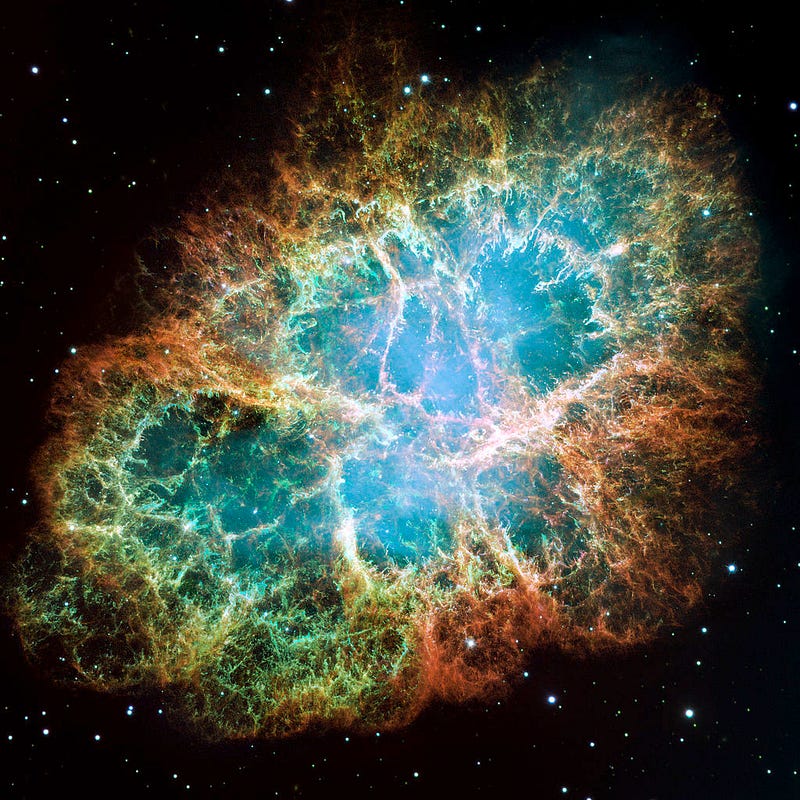
Today, our Sun is fairly typical of a star that formed some 4.5 billion years ago, containing about 70% hydrogen (by mass), 28% helium, and 1-to-2% “heavy elements”, meaning anything heavier than helium. But these heavy elements are rare because they needed to be made in stars! So the farther back in time we go, the fewer heavy elements there were, meaning that if we measure a star’s element content, we get information about its age.
The stars in Messier 56 have only about 1% of the Sun’s heavy element content, a measurement we call metallicity in astronomy. But there are two stars in the Milky Way that we know of that are even significantly older than that: HE 1523–0901, which has just 0.1% the metallicity of the Sun, and the suspected even older star HD 140283, with 0.4% the metallicity of our Sun.
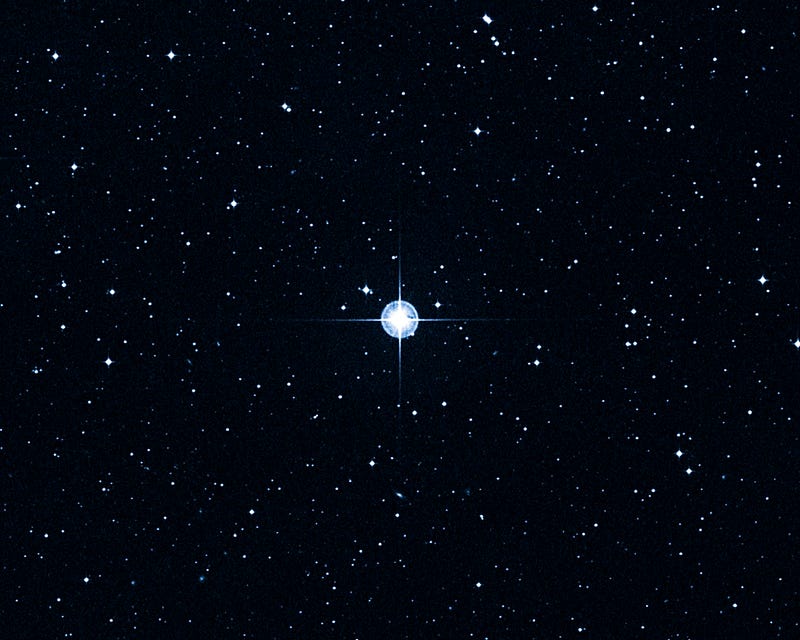
The problem with trying to determine the age of a single star, mind you, is that you only have one star, and you can’t know what the entire history was of the part of the Universe it formed in. Why not? The Universe has simply been too messy for us to trace it back.
Do you remember what the Universe was like in its infancy? Maybe not, but perhaps you’ve seen a picture like this before, representing the fluctuations in the perfect smoothness of the Early Universe.

The blue regions — or cold spots, which are just 0.003% cooler than average — represent overdense regions of space, or locations where there’s just a slightly above-average density of matter. The red regions — or hot spots, which are just 0.003% warmer than average — represent underdense regions of space, or places where there’s a slightly less-than-average density of matter.
The overdense regions will preferentially attract more and more matter over time, with the greatest overdensities collapsing first to form stars, then star clusters, then small proto-galaxies, and eventually larger galaxies and clusters of galaxies.
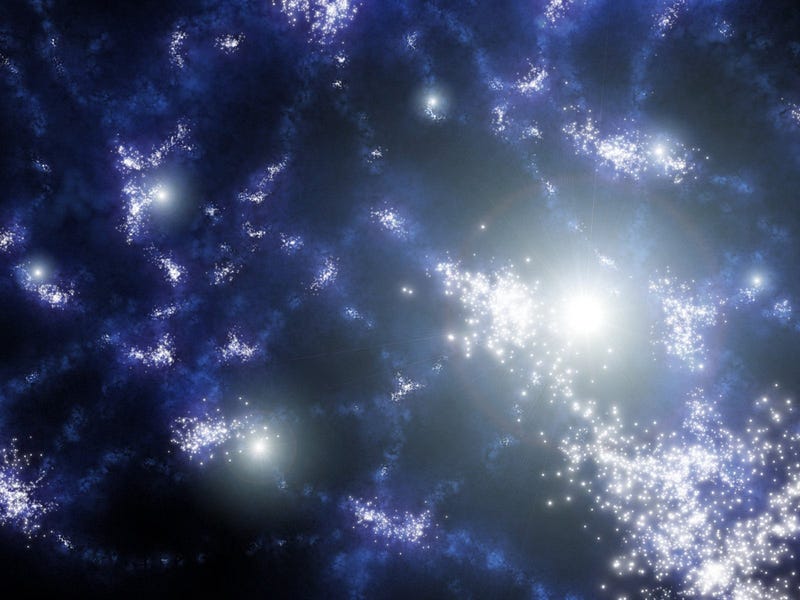
Gravitation, remember, works on the smallest scales first, as the gravitational force is limited by the speed of light. Over lots of time, however, even the smallest overdense regions — even the ones that formed in relative isolation — even the ones that may have formed first of all in the entire Universe, wind up merging together with other overdense regions.
Over time, gravity takes its toll. The result is beautiful, as we wind up with large spiral and elliptical galaxies with a number of dwarf galaxies and mini-galaxies, but very few things survive untouched. In other words, the individual stars in the Universe become well-mixed.
The very first stars in the Universe probably formed — based on our best estimates — just 50-to-100 million years after the Big Bang, or at a time when the Universe was only 0.3-to-0.7% of its present age! Our telescopes can’t look back that far yet, although the James Webb Space Telescope might bring us awfully close. Whatever the oldest one out of the ~10^24 stars in our Universe truly is, it’s almost certain that we won’t be able to find-and-identify it as such.
What we know for certain is that some stars in the Milky Way probably originate from the earliest of times, certainly from back when the Universe was less than 300 million years old, while others are being born right now in certain locations!
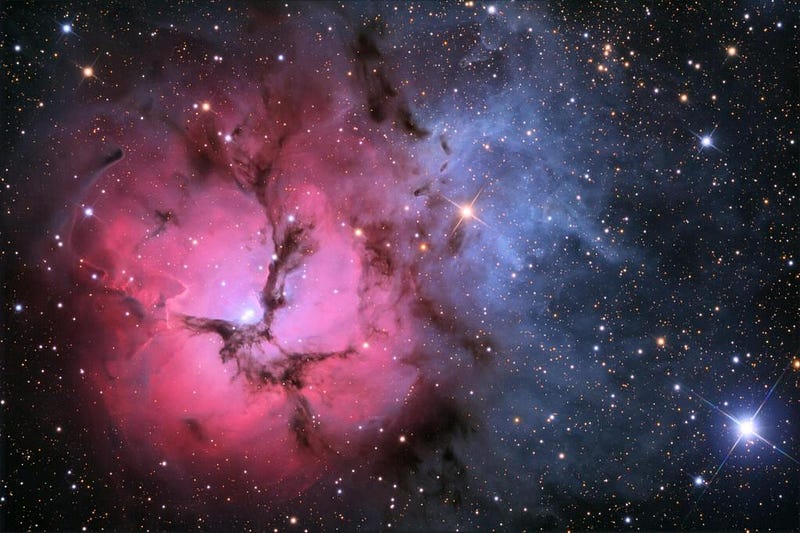
When we look at a star in our galaxy, it’s incredibly well-mixed with stars spanning the history of the cosmos. Some are ancient, going back nearly as far as a star can go; some are newborn, having come to life within the last 0.1% of the age of the Universe; and most of them are somewhere in between.
Maybe, as humans, we can take a lesson from the cosmos, and recognize that we weren’t meant only to spend time with people our own age, but rather that the young, the adolescent, the young adults, the middle aged, the golden aged, the elderly and even the dying can all gain something by being intimately aware of and connected to one another.
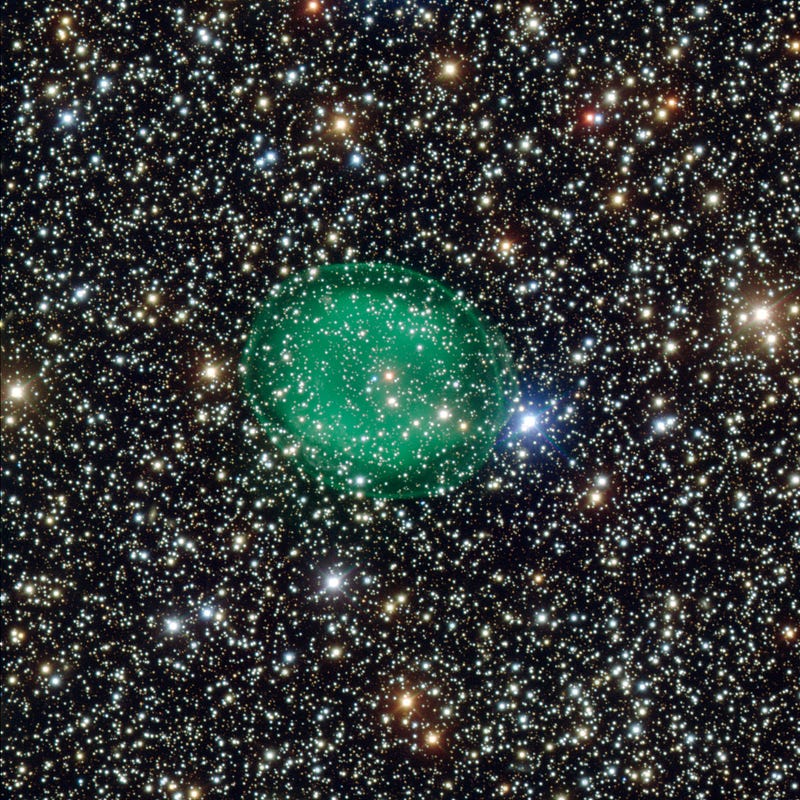
Just like the stars.
Leave your comments at the Starts With A Bang forum on Scienceblogs!





